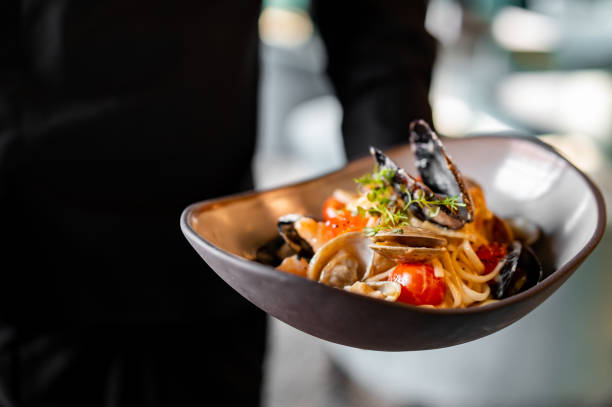
How Tasting Menus are Designed: The Art of a Perfect Meal
Tasting menus offer a curated culinary journey, allowing chefs to showcase their creativity and skill across multiple courses. Each dish is carefully crafted to provide a seamless, balanced, and memorable dining experience. But what goes into designing the perfect tasting menu?
1. Concept and Theme
Every great tasting menu starts with a clear vision. Some menus follow a seasonal approach, using the freshest available ingredients, while others tell a story—inspired by a region, a cultural tradition, or a chef’s personal experiences.
Examples of Thematic Tasting Menus
- Farm-to-table menus featuring locally sourced ingredients.
- Culinary storytelling that reflects a chef’s heritage or travel influences.
- Ingredient-focused menus highlighting rare or luxury items like truffles, caviar, or wagyu beef.
A well-defined concept ensures that every dish contributes to a cohesive dining experience.
2. Course Progression and Balance
A tasting menu is like a symphony—it builds gradually and maintains harmony between flavors, textures, and temperatures.
Key Considerations for Course Flow
- Opening with light, fresh flavors (often raw seafood, delicate vegetables, or small amuse-bouche).
- Gradually increasing in intensity with richer, bolder dishes (meat, umami-packed sauces, or aged cheeses).
- A palate cleanser mid-meal to refresh the taste buds, often a sorbet or citrus-based dish.
- Ending with a well-balanced dessert that isn’t overly sweet but complements the journey.
Each dish must feel distinct, yet connected to the overall flow of the menu.
3. Portion Control and Pacing
A tasting menu typically features 6 to 15 small courses, so portion control is crucial. Dishes must be satisfying but not overwhelming, ensuring guests can enjoy the entire meal without feeling too full too soon.
Pacing also plays a key role. The timing between courses should feel effortless, giving diners enough time to appreciate each dish without long waits.
4. Ingredient Selection and Seasonality
Many top-tier tasting menus emphasize seasonality and sustainability, using ingredients at their peak for the best flavor. Some chefs even design dynamic menus that change daily based on what’s freshest.
- Spring & Summer: Light seafood, citrus, fresh greens.
- Fall & Winter: Root vegetables, game meats, warming spices.
Rare and luxury ingredients may be incorporated, but only when they serve the overall experience rather than being added just for extravagance.
5. Creativity and Surprise Elements
A tasting menu should evoke a sense of wonder and excitement. Chefs often introduce unexpected techniques, textures, or presentations to keep guests engaged.
- Interactive elements: Tableside preparations or molecular gastronomy techniques.
- Unique flavor pairings: Contrasting sweet, sour, salty, and umami.
- Plating as an art form: Using color, height, and negative space to enhance visual appeal.
Surprise dishes, hidden flavors, or an extra “gift” course can elevate the experience even further.
6. Wine and Beverage Pairing
An exceptional tasting menu often includes thoughtfully curated wine or cocktail pairings to complement each course.
- Light, crisp wines for seafood and fresh flavors.
- Full-bodied reds for richer meat courses.
- Dessert wines or digestifs to enhance the final sweet course.
Non-alcoholic pairings, such as craft juices, teas, or infusions, are also becoming more common in high-end dining.
7. The Grand Finale: Dessert and Lasting Impressions
The final dish should leave a memorable impression, whether it’s a delicate pastry, a bold chocolate creation, or a modernist dessert with unexpected textures.
Some restaurants offer petit fours or a final amuse-bouche—a small, sweet bite that acts as a thoughtful conclusion to the meal.
A well-designed tasting menu is more than just a meal—it’s an immersive experience that tells a story through flavors, textures, and artistry. By balancing progression, creativity, and seasonality, chefs craft unforgettable dining journeys that engage all the senses.
You may also like
Archives
Calendar
| M | T | W | T | F | S | S |
|---|---|---|---|---|---|---|
| 1 | 2 | |||||
| 3 | 4 | 5 | 6 | 7 | 8 | 9 |
| 10 | 11 | 12 | 13 | 14 | 15 | 16 |
| 17 | 18 | 19 | 20 | 21 | 22 | 23 |
| 24 | 25 | 26 | 27 | 28 | 29 | 30 |
| 31 | ||||||

Leave a Reply